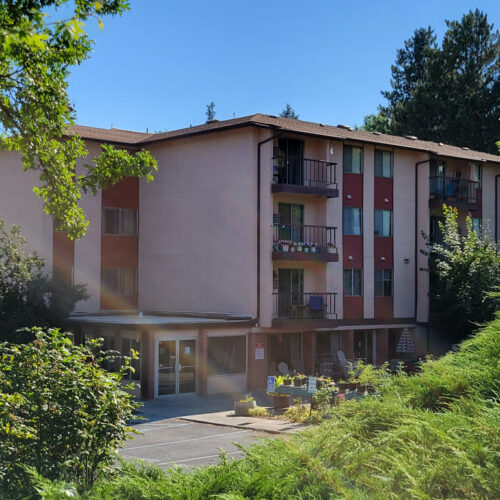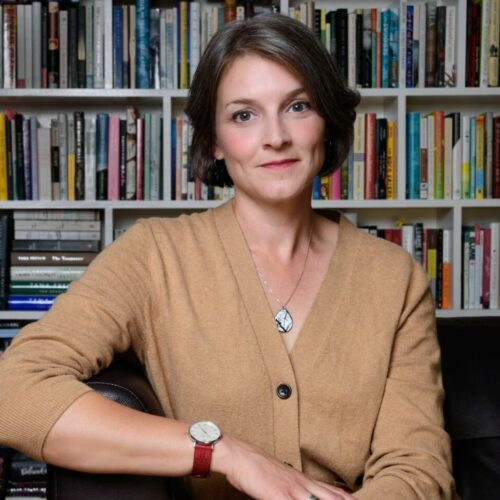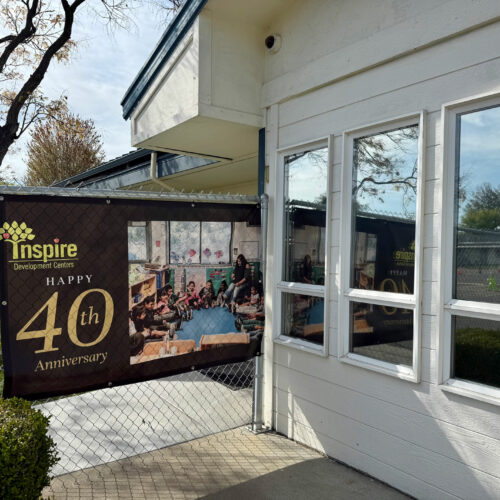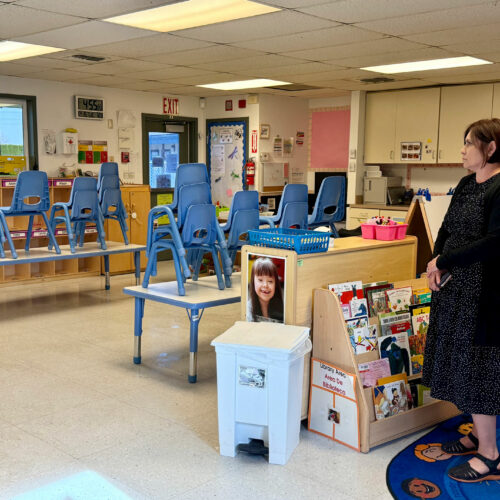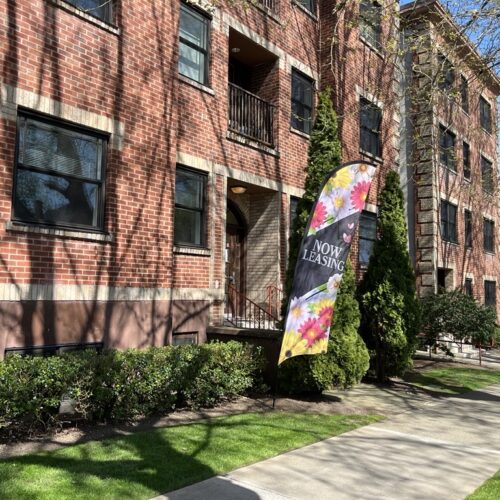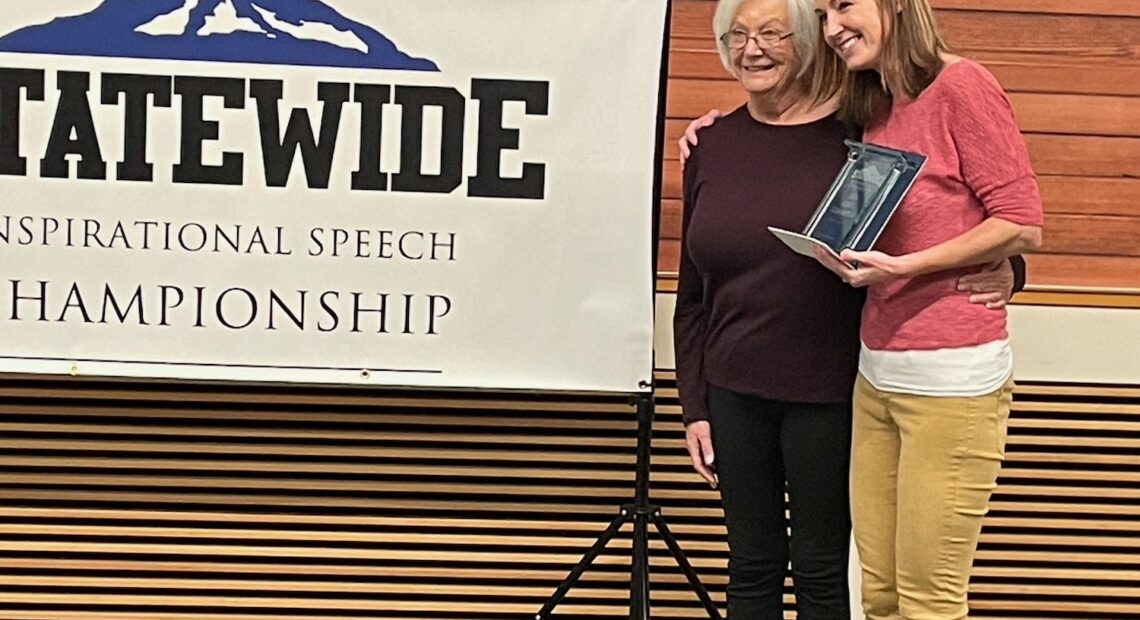
Stories of recovery: Patients talk about pairing medication assisted treatment with provider support
Listen
(Runtime 0:31)
Read
Six years ago, if you had told Jamie Cline that today, she would be the mom of a toddler, working at a doctor’s office and completing her bachelor’s degree, she would have thought you were nuts.
But, she is doing all of those things. On top of all of that, Cline is also nearly six years into recovery from drug addiction.
(Runtime 3:10)
Cline’s addiction story is not unfamiliar to the many who have opioid use disorder. After a bad car accident, Cline was prescribed Oxycontin for pain management. At the time, Cline was already depressed after her fiancé died in a different car accident.
“It was a perfect storm,” Cline said, “and from that, I just spiraled downhill.”
She started using heroin and methamphetamine, and was in and out of jail for 10 years.
“It was a long road,” Cline said.
But, eventually, that road took a detour. Cline found herself in drug court in Thurston County. She shortened her jail-time by working full-time. She moved into an Oxford House, a sober living community, where she was subjected to random drug tests that she said kept her accountable. Responsibilities in the house gave her a sense of purpose, and her family and friends were supportive of her recovery.
While in the program, she started treatment on buprenorphine, a synthetic opioid used to treat opioid use disorder.
“Between that and the counseling, it saved my life,” Cline said.
Cline got the medication through the Olympia Bupe Clinic, which offered a new and different kind of opportunity, one that’s still rare to come by. The walk-in clinic allows someone suffering from opioid use disorder to get medication assisted treatment with buprenorphine starting at their first visit.
That immediacy is not only crucial to get someone started down the path of recovery, but also to keeping them alive. It’s a model Washington state is pursuing with a pilot program to fund health engagement hubs that can get people medication and additional medical treatment at the same place.
“It’s really important to grab that moment, when you find someone that’s ready to seek help, to grab it right at that moment and get them the medicine or get them into a treatment center where they can get the help that they need,” said Dr. Lucinda Grande, one of the co-founders of the Olympia Bupe Clinic.
Grande co-founded the Olympia clinic with the goal of getting people connected to medication assisted treatment as soon as they’re ready.
Previously, in order to prescribe these medications, physicians and clinicians had to go through stringent training to get what was called the X waiver. That barrier was removed in 2023 when the Substance Abuse and Mental Health Services Administration removed the requirement to get that waiver.
Some of what was included in the formerly required training is now outdated, Grande said. With SAMHSA removing the waiver requirement, it’s now possible for any medical provider who can prescribe opioids to also prescribe medication to treat opioid addiction.
And, there is no standardized protocol to start buprenorphine for a person who is using fentanyl, which has now replaced heroin in accessibility, Grande said. That creates a barrier to getting more people treated. The transition to buprenorphine from fentanyl can be bumpy, Grande said, and it benefits from a nuanced approach.
“People who want to do it (prescribe medication assisted treatment) are just picking up a little bit here and there and I think it’s so much better than not having those people do it at all,” Grande said. “But how to get the vast majority of medical care providers to have the harm reduction mentality and to learn how to use it? That’s not an easy project.”
Grande said medical specialty training should include addiction medicine education that focuses on a harm reduction approach. A new website is supposed to help emergency room practitioners prescribe medications for opioid use disorder.
“What really is needed is to spread the concept of low barrier buprenorphine clinics more broadly,” Grande said. “All the places right now that are treating addiction really need to think about that mentality and figure out how to get people the medicine with the least interference, the least barriers and with the most listening and harm reduction mentality.”
The Olympia Bupe Clinic is still running, but Grande now solely practices at Pioneer Family Practice. One of the things she always wanted to do at the clinic was offer more medical services. As a primary care doctor, she can do that.
Cline’s experiences brought her to Grande’s clinic. She now works as Grande’s medical assistant.
Grande said she wanted a medical assistant who had lived through what many of her patients are going through.
Sitting outside the clinic in a courtyard in the July sun, Grande shared how Cline makes a difference for patients.
“Somebody that has lived experience is going to make it just a more hospitable environment for them,” Grande said. “Jamie was like, alright, bullseye.”
Across the table, Cline agreed.
“When you tell them, ‘I’m a recovering addict,’ it’s like that instant, you can almost see their shoulders kind of relax,” Cline said.
When Cline was actively using, she had two terrible experiences at a hospital, both times seeking help for an infection. Once, the doctor cut into her without giving her anything to numb the paint. Cline said two nurses held her down.
“One of the nurses says, ‘Well, I guess you’re not going to shoot up anymore, are you?’” Cline said.
She has a scar from another experience of a doctor cutting into her.
“They were trying to teach us a lesson, is what they were trying to do,” Cline said. “This was not a secret thing, this was known in the drug community, what some of these doctors did.”
Now, Cline said she shares her story with others seeking help.
“The thing that people will tell you over and over again, is that what they value is being listened to, having somebody that will just hear them and believe them and know what they’re going through, being a witness to their pain and their suffering and that honest listening is so therapeutic,” Grande said.
Cross-country, a long road to recovery
(Runtime 3:18)
When Grande left the Olympia Bupe Clinic, she invited some of her patients into her primary care practice, where she could provide additional medical care not available at the walk-in clinic. One of those patients was a man named Ian.
To protect his anonymity, we’re only using Ian’s first name. Ian came out to Washington after losing his job during the Great Recession. He has a family and personal history with addiction. Before he moved to Washington, he’d already been sober for seven years and was working his dream job at a recovery ministry in Florida.
When he lost that job, he and his wife decided they would travel the country from Florida to Alaska and see as much as they could along the way. They made it to Washington, but by that time, their relationship was on the rocks. Ian got an injury. Then, he relapsed.
Ian had been an opioid user in Florida, where he was able to get access to pills easily.
He’d never been introduced to heroin. But after the injury, he got Percocet from an overnight clinic in Washington. Getting the pills was harder in Washington. That led him to heroin.
“I ended up relapsing bad,” Ian said. “I got to the point where I was doing a half ounce of heroin a day.”
When someone is suffering from addiction, Ian said that there will be times during the disease’s progression where a little crack in your perspective emerges and the light shines in.
It only lasts for a moment, and often, Ian said the next thought is, “I need to get more drugs so I don’t feel sick in a couple of hours.” But sometimes, that’s when someone seeks help.
Ian went through detox in Grays Harbor twice. The first time, he said no to taking buprenorphine. Not knowing anything about it, he said he thought it was a crutch he didn’t need.
He made it two days before he relapsed.
When he went back, the doctor told him he had never seen anyone do as much heroin as Ian. Ian said the doctor told him, “If you continue to do this, you’re going to die.”
Ian made a different choice. After detox, he connected with Grande and started on buprenorphine. He said it was a miracle.
When someone uses opioids heavily, the dopamine receptors in their brain are altered, and when they stop using opioids, their brain recovers slowly, Grande said. It may be harder for them to regulate emotional responses, and they may experience a low-grade depression for anywhere from weeks to months. Buprenorphine allows the brain to return quickly back to a more normal state.
With buprenorphine, Ian said he feels like he’s returned to that baseline.
The medication acts by binding to the opioid receptors in the brain to reduce cravings and prevent withdrawal symptoms, without producing euphoria.
But research has shown that people can do better in recovery with medication paired with a plethora of other supports.
That’s where providers like Grande sometimes step in. Grande would call Ian late at night to see how he was doing. She helped him after he was a victim of theft. She helps him make medical decisions about other conditions that might be impacting him.
Ian said having Grande as an empathetic advocate was crucial to his recovery.
‘Relapse happens way before you relapse’
(Runtime 2:54)
Relapse is often part of recovery from addiction. That understanding is part of the nuanced approach Grande said providers who work in addiction medicine need.
“A lot of times when people make that transition to buprenorphine, it doesn’t stick right away,” Grande said.
A little over a month ago, Grande administered another patient’s first dose of Sublocade, a long-acting injectable form of buprenorphine treatment that provides a high dose that lasts for a month.
It’s the next thing Grande is trying with Kellie, who has been her patient for years and has struggled to find recovery from opioid addiction. We’re only using Kellie’s first name to protect her identity. Kellie has previously tried the oral medication, but she has been homeless since 2015, and she said it’s hard for her to keep track of it.
“I’m always losing my medication or someone’s stealing it or blah, blah, blah. So, you know, it’s a big hassle,” Kellie said. “But if you have this you don’t have to worry about it, and it’s just amazing.”
After the first dose, Kellie made the decision to turn herself in on outstanding warrants. The medication got her through the jail time, she said, and she recommended it to other women at the jail.
Just a day before she sat down with me outside of Pioneer Family Practice, Kellie received her second dose of Sublocade. She was also getting ready to move into a tiny home, after being on the list for years. Grande hopes these are positive changes for Kellie and said she seems more stable.
For the past five years, Grande has been a great support to Kellie amid a number of hardships.
“I am just so blessed, she has saved my life many times,” Kellie said. “God goes through people to save people’s lives.”
Kellie said she has been trying to get clean since the 1990s. Now, at 51, she has had periods of sobriety, but a major relapse in 2015 meant she lost everything. She has been homeless since.
“Relapse happens way before you relapse,” Kellie said of the struggle of addiction, recounting behavior patterns that led her back to drug use time and time again over the years.
She’s tried many of the traditional routes to sobriety — sober living at Oxford Houses, stays in psychiatric wards, drug and alcohol treatment, jail time.
She was one of the Olympia Bupe Clinic’s first patients when it opened in 2019. That’s where she met Grande.
“She supports me in every way I can think of. She’s amazing,” Kellie said. “She supports my physical, mental health, everything. She just has such a big heart and she cares, really cares.”
Grande’s care for Kellie is evident in the ways she has been there for Kellie, like taking her to a psychiatric ward during a psychotic episode, or taking Kellie’s mom on as a patient too. Never giving up.
Kellie and Grande sat across from each other outside the Pioneer Family Practice in a courtyard. As Kellie spoke about her future, she got emotional, saying she can see everything she’s ever dreamed and hoped for, coming true.
“Do you feel like you’re there, right now?” Grande asked her.
“Yes, and I know I’m there right now,” Kellie responded. “We get in the middle of our chaos and all the stuff and we don’t see it. But other people see the goodness and and I’m beginning to peel off whatever makes me blind and just look, and pace myself.”



